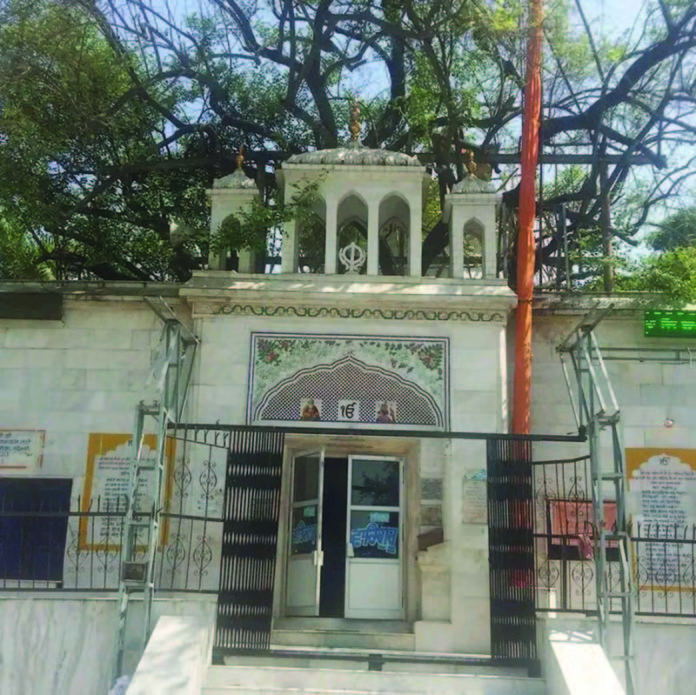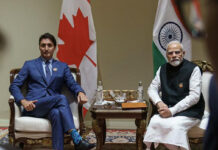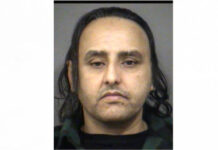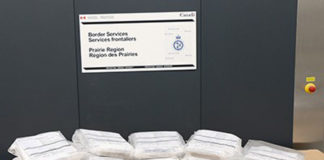

JAMMU (India): The life story of Baba Banda Singh Bahadur, the first Sikh warrior after the gurus, makes an interesting story.
He was born Lachman Dev, a Rajput of Bhardwaj gotra, at Rajouri in October 1670.
Banda Bahadur’s descendant Tejinder Pal Singh says, “Bhardwaj gotra is found among Brahmins and Rajputs. Thakkars are mostly of Bhardwaj gotra even now. Our ancestor was born into a Rajput family.”
But since Banda was adopted by Guru Gobind Singh as his ‘dharma putra’, his tenth-generation descendants today use the surname Sodhi, explains Shamsher Singh, granthi of Dera Baba Banda at Reasi.
Reasi is about 75 km to the north-west of Jammu. This dera lies between the towns of Katra (the base camp of the world-famous Vaishno Devi shrine), and Reasi.
Baba Banda Singh Bahadur set up this dera in 1713 and erected a 48-foot high Nishan Sahib which is still intact. He stayed here for two years – 1713 to 1715.
Today, it is the most important gurdwara of Bandai Sikhs – the followers of the great Sikh general.
It is headed by the tenth-generation direct descendant of Baba Banda Bahadur named Jatinder Pal Singh Sodhi, who is around 80 years old. He lives mostly in Rohtak where the Bandai Sikhs have another gurdwara.
Karnal and Khanda near Sonepat are two other important places for the followers of this sect.

Baba Banda Singh Bahadur married twice.
From his first wife was born his son Ajay Singh who was executed in Delhi along with him by the Mughals in 1716.
Baba Banda Singh Bahadur’s second wife, Sahib Kaur, gave birth to their son named Ranjit Singh whose descendants are the custodians of Dera Baba Banda.
Says Shiv Shanker Pahwa, a devotee, “Every descendant of Baba Banda Bahadur married twice and invariably it is the children of their second wives who carried on the lineage. Even the present gaddi nashin Baba Jatinder Pal Singh has married twice.”
Baba Jatinder Pal Singh was married to his first wife for 25 years but she bore him no children.
He married again and now has two children, a son and a daughter. While the daughter is a dentist and son Jot Prakash Singh is pursuing post-graduation in psychology, says Pahwa.
Baba Banda Bahadur’s ashes are kept at this dera. Some clothes and weapons used by Baba Banda Bahadur and three handwritten religious books of that era are also kept here.
Among the books are two copies of the holy Granth Sahib and a copy of Dasam Granth, according to dera head granthi Shamsher Singh.


How did the ashes of Baba Banda Bahadur reach Reasi?
The ashes were brought to Reasi by a brother of his second wife Sahib Kaur after Baba Banda Bahadur’s cremation at Barapullah in Nijam-ud-din in Delhi following his execution in Mehrauli.
His second wife Sahib Kaur was pregnant when Baba Banda Bahadur left Reasi after establishing the dera.
She survived as she was not with him when he was captured by the soldiers of Mughal emperor Farrukhsiyar in December 1715 after a long siege at Gurdas Nangal fort near Gurdaspur.
Banda Bahadur fought some major battles against the Mughals to avenge the killing of two younger sons of Guru Gobind Singh.
It was in the battle of Chappar Chiri on May 12, 1710, that Baba Banda Bahadur’s soldiers killed Sirhind Governor Wazir Khan who had ordered brutal killings of the Guru’s younger sons Zorawar Singh and Fateh Singh in December 1705.
After Chappar Chiri, Baba Banda Singh captured Sirhind two days later, thus gaining control of the vast territory from the Sutlej to the Yamuna.
He ordered that the farmers be given the ownership of the land they tilled. For this, the farmers of Punjab must be thankful to Banda Bahadur.
After his valiant fight when he surrendered in 1715, the Mughals promised to treat him with respect.
But Mughal emperor Farrukhsiyar quickly ordered Banda to be put in an iron cage. The way he was killed has no parallels in history.
Some historians claim that Baba Banda was excommunicated in 1715 by Mata Sundari, the widow of Guru Gobind Singh, when she was a prisoner in custody of forces of Mughal emperor Farrukhsiyar.


These historians claim that before being excommunicated, Baba Banda was asked twice by her to surrender before the Mughal army and both times he refused as he did not trust the Mughals.
There are also claims of Baba Banda’s followers stopping to wear traditional blue robes, instead choosing red, and replacing the traditional Sikh greetings of ‘Sat Sri Akal’ with ‘Fateh Darshan.’
However, Dr Ganda Singh, one of the foremost scholars on Banda Singh Bahadur, says in his book Life of Banda Singh Bahadur that the story about Banda’s excommunication is not correct.
Dr Ganda Singh asserts that there was no historical evidence available for this.
He says Banda’s purported differences with Mata Sundari are all cooked-up narratives spread by those who wrote for Mughals in that era.
This narrative was meant to create discord among the Sikhs and need not be given any credence, according to Dr Ganda Singh.
Regarding the descendants of Banda Singh Bahadur, Dr Ganda Singh writes: “The practices at Dera Banda Singh up to the present day (1935) are strictly in accordance with the tenets and traditions of the Sikh religion.”
Here is Baba Banda’s family line:
Baba Banda Singh Bahadur
Baba Ranjit Singh
Baba Jujhar Singh
Baba Fateh Singh
Baba Amir Singh
Baba Daya Singh
Baba Teja Singh
Baba Attar Singh
Baba Sardul Singh
Baba Jatinder Pal Singh Sodhi
Baba Jot Prakash Singh Sodhi (called Chhotay Babaji)
ALSO READ: Canada’s Wanda McDonald explains why she became a Sikh








